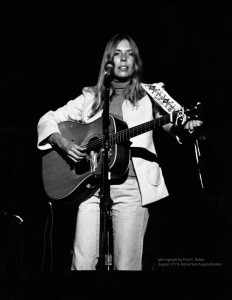Ownership of the thing itself—an urgency that kept postwar teens in book and music stores for hours on end—seems to be a fading passion.
I wonder about the future of the personal library: those numerous shelves lined with books and music that still line the walls of many of our homes. Owning a physical copy of the work of a writer or performer was, until recently, a sometimes obsessive pursuit for devoted listeners and readers. For many these displays of neatly organized works are a badge of honor, meant in part to suggest membership in certain aesthetic tribes within the culture.
I’m writing in a room cluttered with stuffed bookcases. It’s the same in other parts of the house, where CD cases sit on table tops and stand upright on shelves. We are clearly vestiges of the Edison past. In the early days of recording the idea of capturing sound was completely engrossing. Thomas Edison was as much in awe of the idea as everyone else. Add in the possibility of owning a disk of a performance that could be played at will, and the nation collectively swooned at the chance. Shellac cylinders and flat disks soon became their own fetishized possessions. Every middle class parlor had a record player and a growing collection of relatively expensive 78 r.p.m. records. Jump ahead several generations well into the 1990s and teens were still heirs to this passion of record collecting. British novelist Nick Hornby enshrined three clearly recognizable obsessives in his wonderful 1995 book, (and, later, a film) High Fidelity. In our own ways we were Jack Black: voracious readers of album liner-notes, and dead-certain of what to display with pride and what to hide.
Ownership is its own reward: something many of us still feel as we purchase a book we will read and perhaps re-read at a later time.
The personalized library has been memorialized by the wealthy with its own room in turn-of-the-century mansions. The rest of us starting out as impoverished students usually exercised the less baroque option of bookcases made from bricks and boards. In either case books were considered intellectual and decorating necessities. Their presence meant that you were a serious collector. Robert Pirsig on one shelf and Miles Davis on another conferred status.
Now the tide has receded. To more younger consumers in most places (except Japan, with its continuing love of CDs) these music and print libraries seem to be an anachronism, like the player-piano rolls I remember as a child collecting dust in a corner of my grandmother’s lace-curtained living room. Digital “natives” are just as happy essentially leasing access to commercial libraries, such as those offered by Amazon, Spotify, Netflix, Apple and others. Even the e-book, which is sold as the digital equivalent of a hard copy, is never quite the owner’s in the ways that the paper version is. It can’t be easily loaned or resold because its storage is usually in a proprietary “cloud.” Digital “immigrants” used to owning works are not quite convinced that we will have access to the work in perpetuity. A cloud-based purchase of an author’s book or a composer’s symphony seems less permanent.
Communication scholar Joshua Meyrowitz partly explains what has changed in his use of the phrase, “the Association factor.” When we own a hard copy of another’s work—when it is in our physical possession—we more readily identify ourselves with it. It’s an artifact tied to our identity, an outward representation of our place on the human map. So if I am carrying around a copy of a particular novel or have a copy of music cd sitting in the living room, I’m probably prepared to defend its presence in my space. I’ve “associated” myself with it. By contrast, a person may feel no responsibility to defend a song that presents itself to houseguests on Spotify. The lease of a channel of media content seems less personal than outright ownership, even though custom music sources have the advantage of opening our ears to much larger libraries.
My own adult children are mostly consumers of these digital services, and just as passionate in their own ways about their music and books as earlier generations. But ownership of the thing itself—a fact that kept postwar teens in book and music stores for hours on end—seems to be a passing signifier of the avid appreciator. No doubt that for many modern consumers walls of CDs and books look archaic. Why hold “hard” copies if they are all available in digitized files? Perhaps the only answer is that some books and performances are too precious to not hold in one’s hands.
Comments: Woodward@tcnj.edu
